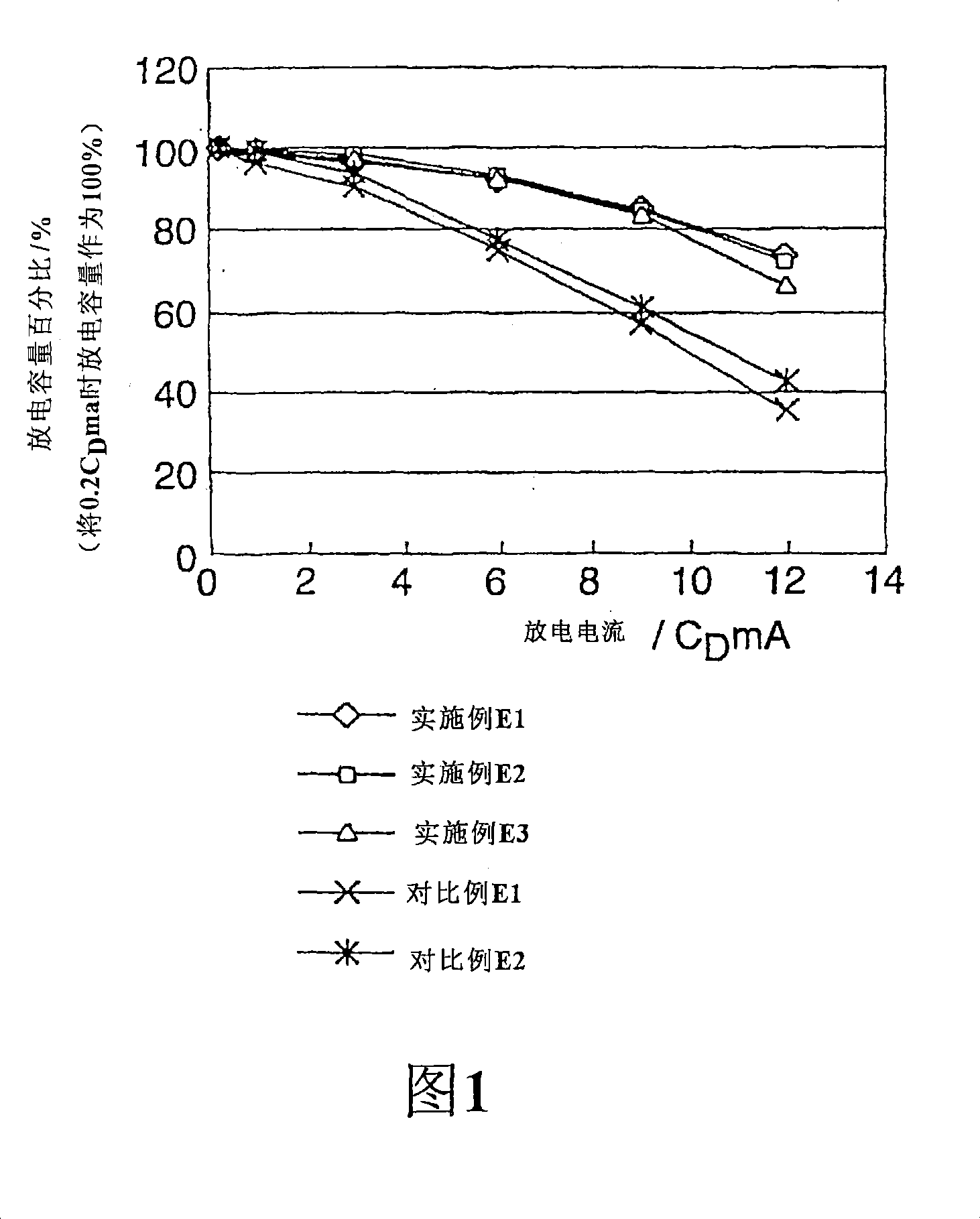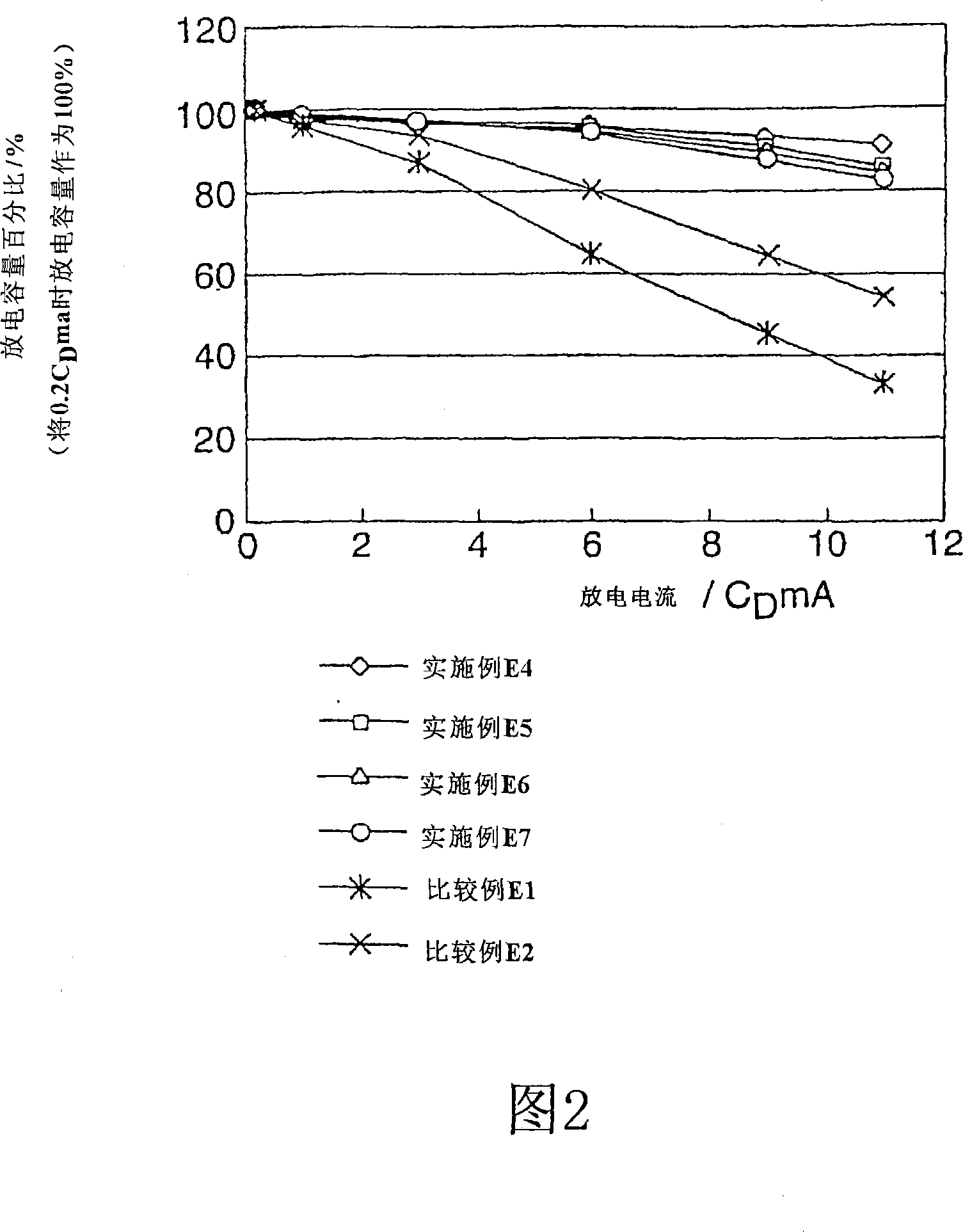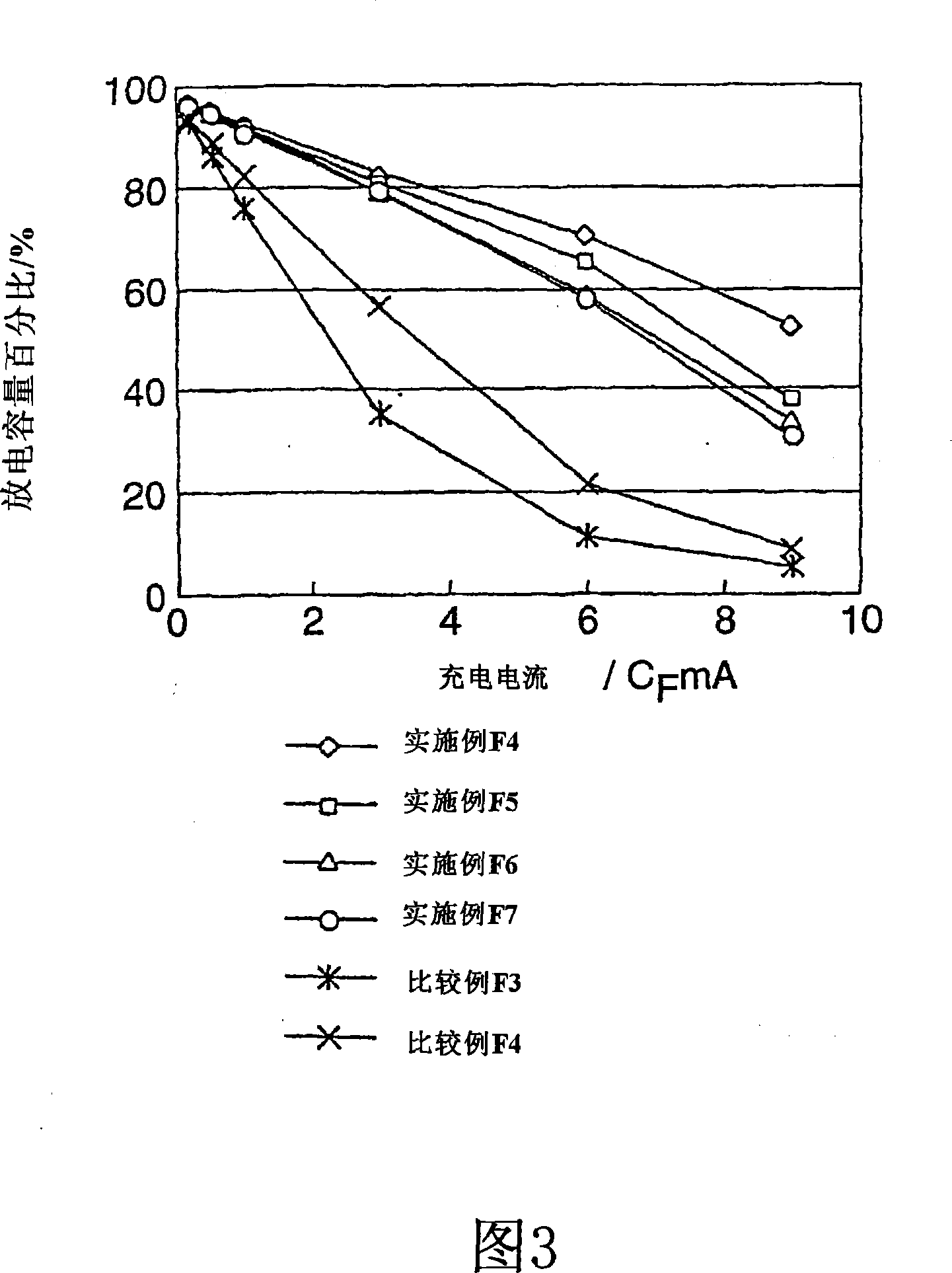Nonaqueous electrolytic solution for electrochemical energy devices
A non-aqueous electrolysis and electrochemical technology, applied in non-aqueous electrolyte batteries, non-aqueous electrolyte batteries, electrochemical generators, etc., can solve problems such as increased battery pressure, deterioration of battery performance, and adverse effects on device performance.
- Summary
- Abstract
- Description
- Claims
- Application Information
AI Technical Summary
Problems solved by technology
Method used
Image
Examples
Embodiment
[0070] The present invention will be described in more detail through the following exemplary embodiments.
[0071] In Examples and Comparative Examples, the following compounds are sometimes represented by symbols in parentheses or chemical formulas.
[0072] Aprotic solvents:
[0073] Ethylene carbonate (EC)
[0074] Propylene carbonate (PC)
[0075] Diethyl carbonate (DEC)
[0076] Ethyl Methyl Carbonate (EMC)
[0077] Dimethoxyethane (DME)
[0078] Gamma-butyrolactone (GBL)
[0079] Tetrahydrofuran (THF)
[0080] Fluorinated ethers:
[0081] C 2 f 5 CF(CF(CF 3 ) 2 )-OCH 3 (HFE1) (boiling point: 98°C)
[0082] C 2 f 5 CF(CF(CF 3 ) 2 )-OC 2 h 5 (HFE2) (boiling point: 104°C)
[0083] CF 3 CFHCF 2 OC 2 h 4 OCF 2 CFHCF 3 (HFE3) (boiling point: 164°C)
[0084] CF 3 CFHCF 2 OC 3 h 6 OCF 2 CFHCF 3 (HFE4) (boiling point: 188°C)
[0085] CH 3 -O-C 6 f 12 -O-CH 3 (HFE5) (boiling point: 166°C)
[0086] H-C 6 f 12 -CH 2 -O-CH 3 (HFE6) (boiling...
Embodiment A1~A20 and comparative example A1~A3
[0104] Prepare non-aqueous electrolytic solutions with the compositions shown in Table 1 at 25° C., and observe the appearance of the solutions.
[0105] In Examples A1-A14, the non-aqueous electrolytic solution was prepared by dissolving the supporting electrolyte in the non-aqueous mixed solvent containing the fluorinated ether of the present invention and the aprotic solvent, and tested, and a transparent and uniform solution was obtained.
[0106] In Examples A15-A20, the non-aqueous electrolytic solution further added with perfluoroketones or perfluorocarbons was tested, and a transparent and uniform solution was obtained as a result.
[0107] In comparative examples A1-A3, instead of adding the fluorinated ether of the present invention, perfluoroketones and perfluorocarbons were added, and the non-aqueous electrolytic solutions prepared therefrom were tested, and the solution was stratified.
[0108] non-aqueous solvent
Aprotic solvent 1 (vol%)
...
Embodiment A21~A64
[0113] In the compatibility test, various solvent compositions using various electrolytes shown in Tables A2 to A4 were further tested.
[0114] non-aqueous solvent
Aprotic solvent 1 (vol%)
Aprotic solvent 2 (vol%)
Fluorinated ethers of the present invention
(vol%)
Other solvents (vol%)
Supporting electrolyte (concentration)
(note)
Solution Appearance
Example A21
EC(18)
DEC(72)
HFE1(10)
BETI (1mol / L)
Transparent and uniform
Example A22
EC(16)
DEC(64)
HFE1(20)
BETI (1mol / L)
Transparent and uniform
Example A23
EC(30)
DEC(60)
HFE1(10)
BETI (1mol / L)
Transparent and uniform
Example A24
EC(40)
DEC(55)
HFE1(5)
BETI (1mol / L)
Transparent and uniform
Example A25
EC(10)
DEC(80)
HFE1(10)
LiPF 6 (1mol / L)
Transparent and uniform
Example A26
EC(20)
DEC(75)
HFE1(5)
...
PUM
| Property | Measurement | Unit |
|---|---|---|
| boiling point | aaaaa | aaaaa |
| boiling point | aaaaa | aaaaa |
| boiling point | aaaaa | aaaaa |
Abstract
Description
Claims
Application Information
 Login to View More
Login to View More - R&D
- Intellectual Property
- Life Sciences
- Materials
- Tech Scout
- Unparalleled Data Quality
- Higher Quality Content
- 60% Fewer Hallucinations
Browse by: Latest US Patents, China's latest patents, Technical Efficacy Thesaurus, Application Domain, Technology Topic, Popular Technical Reports.
© 2025 PatSnap. All rights reserved.Legal|Privacy policy|Modern Slavery Act Transparency Statement|Sitemap|About US| Contact US: help@patsnap.com



